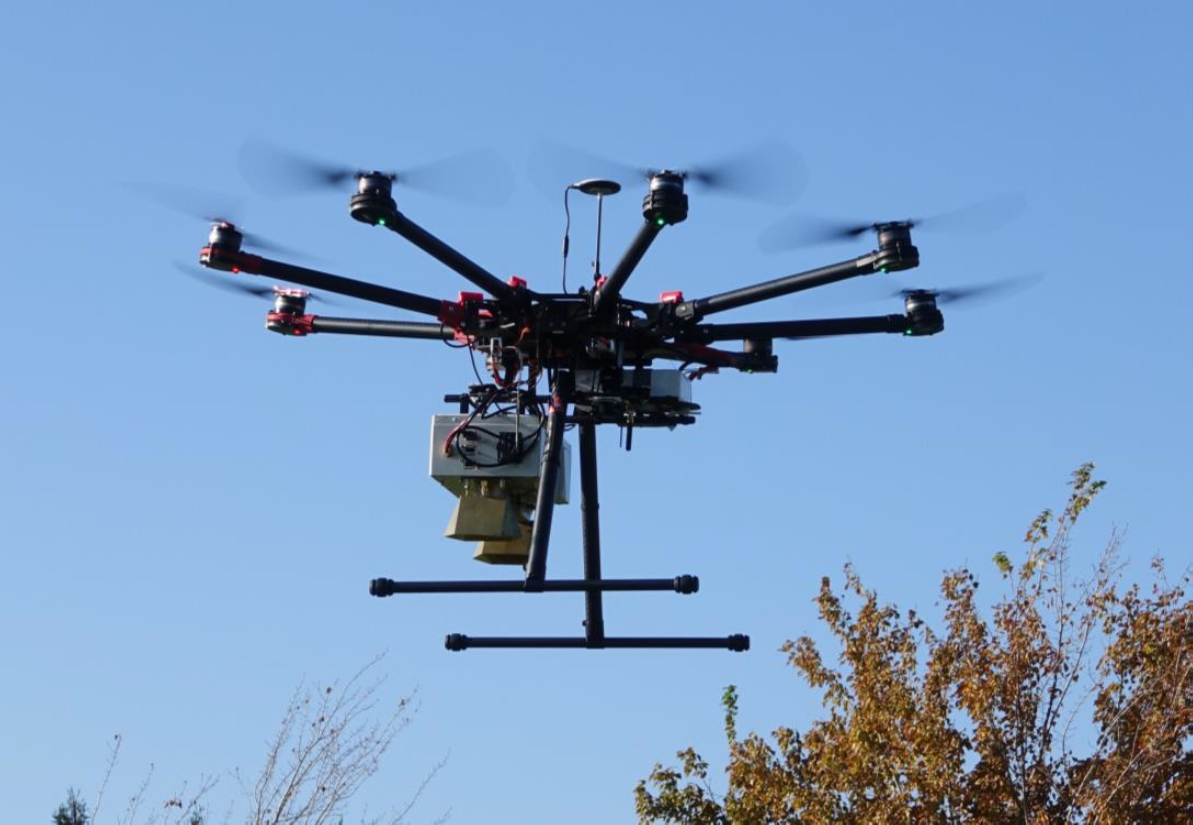Ground Penetrating Radar (GPR) platforms come either in handheld systems or mounted onto a wheeled system. In each case, the operator is required to be in close proximity of the radar system, either carrying it on a pole or pushing it on a wheeled platform. This increases danger to the operator looking for hazardous devices as well as limits the area to only those that a human can access.
Systems that have arrays that are mounted to vehicles allow for faster coverage. These too are limited to places accessible to vehicles and does not completely remove the operator from hazardous environments.
GPR that can operate autonomously can benefit users both in cost and time. Deploying multiple drone systems can advance the pace of discovery at a lower cost than human deployed systems.
LLNL researchers have developed a lightweight drone-based GPR array that when flown over a surface with laid and/or buried objects could image the field of view and be able to detect targets and discriminate them from clutter. The imaging method employs a modified multi-static architecture to provide the highest signal to noise with the lowest system weight, making it ideal for airborne or drone-borne applications. Furthermore, the drone platform allows rapid mapping and detection of an entire field or location by a swarm of drone-mounted GPRs.
The technology that has been developed reduce array size, weight, and power, provide for autonomous and semi-autonomous operation, reduce data processing requirements, allow for automated waveform generation and software defined radar, and are implemented in a swarming architecture for rapid and robust surface and subsurface scanning of large areas. This technology can also be used for forward looking applications as well as through the wall imaging of building interiors.
LLNL’s Drone-based Ground Penetrating Radar Array has numerous advantages:
- Autonomous and semi-autonomous operations
- Drone Swarm Ability (multiple drones)
- Reduced size and weight
- Ability to penetrate through many materials, including soil and common structural components, such as walls.
- Humanitarian applications in unexploded ordinance and countermine applications
- Locating and mapping subsurface features prior to digging, construction, and civil engineering projects
- Locating improvised explosives
- Looking through walls of buildings
Article: https://str.llnl.gov/2018-06/beer
Current stage of technology development: TRL 8 and used for several government projects
Patent No. 11614534, UAV ground penetrating radar array published 03/28/2023


